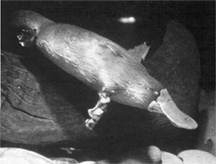The blood-brain barrier does not
a. protect the brain and the spinal cord.
b. select which substances can enter the cerebrospinal fluid.
c. allow oxygen, carbon dioxide, and alcohol to pass from the blood to the cerebrospinal
fluid.
d. block glial cells from migrating to the spinal cord
e. shield the brain from many changes in the blood
D
You might also like to view...
Biomagnification is a significant problem in aquatic communities. Levels of chemicals magnify (increase or accumulate) at each new link in a food chain. Use the following information to estimate the level of chemical X in a large-mouth bass. One alga can accumulate 1 unit of chemical X. Eachcopepod eats 15 algae. A minnow consumes 10 copepods, each large-mouth bass consumes 20 minnows.
A. 15 units B. 20 units C. 30 units D. 150 units E. 300 units F. 3,000 units G. 20,000 units Clarify Question · What is the key concept addressed by the question? · What type of thinking is required? Gather Content · What do you already know about biomagnification? Choose Answer · Given what you now know, what information and/or problem solving approach is most likely to produce the correct answer? Reflect on Process · Did your problem-solving process lead you to the correct answer? If not, where did the process break down or lead you astray? How can you revise your approach to produce a more desirable result?
Light enters the eye's interior through the __________, an adjustable opening in the center of the
muscular, doughnut-shaped iris. Fill in the blank(s) with the appropriate word(s).
The organism in the accompanying figure can be classified as:
a. a bird.
b. a reptile.
c. a prokaryote.
d. a protista.
e. a mammal.
Describe the life cycle of Plasmodium vivax and explain how humans fit into its life cycle.
What will be an ideal response?